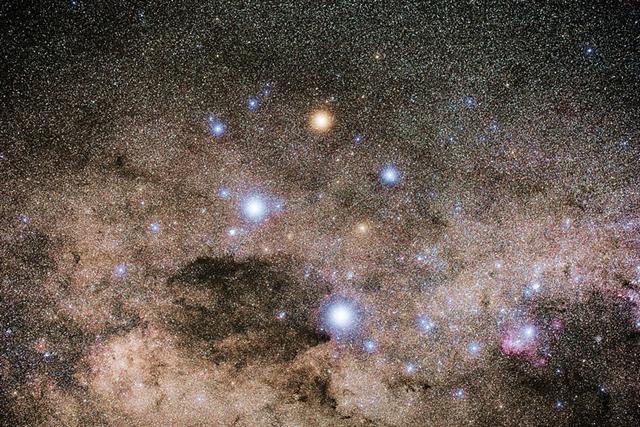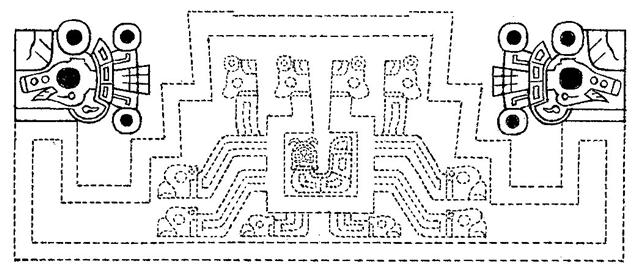There appears to have been a
tendency (in rongorongo times) for cardinal
points in time to coincide with days when
the Sun rose without some heliacal star
companion:
|
Noi
To bend down toward the ground,
to bow down, to worship.
Hakanoi, to prostrate
oneself. Ta.: Noinoi,
small, fine. Mq.: noi, a
dwarf, of slow growth. Ha.:
noinoi, small, as a dwarf.
Churchill. |
|
March 19 |
20 (80) |
|
21 (81) |
22 |
23 |
|
September 18 |
19 |
20 |
21 (264) |
equinox |
 |
 |
 |
 |
 |
|
Cb14-9 |
Cb14-10 |
Cb14-11 |
Cb14-12 |
Cb14-13 |
|
kua haro te
rima |
te marama |
ku kikiu |
tagata |
kua to i te
heke |
|
η Tucanae (363.0), ψ Pegasi
(363.1), 32 Piscium (363.2), π
Phoenicis (363.4), ε Tucanae
(363.6), τ Phoenicis (363.9) |
no star listed |
Al Fargh al Thāni-25 |
Uttara Bhādrapadā-27
/
Wall-14 |
χ Pegasi
(2.1), θ Andromedae (2.7) |
|
0h (365.25) |
|
Caph,
SIRRAH
(0.5),
ε Phoenicis (0.8) |
ALGENIB PEGASI (1.8) |
|
π
Virginis (181.0) |
12h (182.6) |
Alchita,
Ma Wei (183.1), Minkar (183.7),
ρ Centauri (183.9) |
Pálida (184.6), Megrez (184.9) |
Hasta-13 /
Chariot-28 |
|
ο
Virginis (182.1) |
GIENAH
(185.1), ε Muscae (185.2),
Zaniah (185.9) |
|
Kikiu
Kikiu. 1. Said of food
insufficiently cooked and therefore
tough: kai kikiu. 2. To tie
securely; to tighten the knots of a
snare: ku-kikiu-á te hereíga,
the knot has been tightened. 3.
Figuratively: mean, tight, stingy;
puoko kikiu. a miser; also:
eve kikiu. 4. To squeak (of
rats, chickens). Kiukiu, to
chirp (of chicks and birds); to make
short noises. The first bells
brought by the missionaries were
given this name. Vanaga.
Kiukiu (kikiu).
1. To resound, to ring, sonorous,
bell, bronze; kiukiu rikiriki,
hand bell; tagi kiukiu, sound
of a bell; kikiu, to ring,
the squeeking of rats; tariga
kikiu, din, buzzing;
hakakiukiu, to ring. Mgv.:
kiukiu, a thin sound, a soft
sweet sound. 2. To disobey,
disobedience; mogugu kiukiu,
ungrateful; ka kikiu ro, to
importune. Churchill. |
 |
|
viri |

Mimosa (β
Crucis) rose with the Full Moon in March
30, and it is the star hovering above what in
this photo looks like a dark bird (the
Coalsack Nebula) with
Acrux as its blazing head.
We can
compare with the foundation on
the Gateway of the Sun - where Mimosa surely must
be the next to Acrux - in this drawing - greatest of the 4
stars:

The creator of the C text
could have thought of this pair of
oppositely oriented 'bird' heads, when he
incised his manu puoko erua at Cb14-15,
at the ancient March 25 equinox.
Possibly the length of the C
text had to include September 28 in the
nakshatra position of March 29 in order to
have Porrima close to the Full Moon as a
sign that Sun had reached Delta in
Andromeda:
|
March 27 |
28 (88) |
29 |
|
September 26 |
27 |
28 (271) |
 |
 |
 |
|
Cb14-17 |
Cb14-18 |
Cb14-19 (740) |
|
kokoti hia te henua - tagata
hakaitiiti - i te henua |
|
λ Phoenicis (6.3), β Tucanae (6.4) |
no star listed |
DELTA
(8.4), Schedir (8.6), μ Phoenicis
(8.9) |
|
γ
Muscae (189.0), Avis Satyra (189.3),
Asterion (189.5), Kraz (189.7) |
α
Muscae (190.2), τ Centauri (190.5),
χ Virginis (190.7) |
Al Áwwā'-11 |
|
ρ
Virginis (191.4),
PORRIMA,
γ Centauri (191.5) |

March 25 was the date for
spring equinox according to the Julian
calendar and this could explain the glyph
type manu kake in Cb14-15. Metoro
said manu puoko erua here and maybe
this was because the ancient 0h had not yet been reached
- the little 'bird' could not climb as yet.
 |
 |
|
manu kake |
manu puoko erua |
... When Julius Caesar established his
calendar in 45 BC he set March 25 as the
spring equinox ...
"A century later [than
Caesar's reform of the calendar in 46
B.C.], when Pliny dated the winter
solstice to 25 December because the sun
entered the 8th degree of Capricorn on
that date, this stability had become an
ordinary fact of life." (Wikipedia)
If Pliny meant 8 days
beyond Dabih, then this would in rongorongo
times have corresponded to 8 days beyond
308.0 (- 0.4) + 80. This was when
μ Aquarii
rose with the Sun:
|
182 |
October 16 (289) |
70 |
December 26 (360) |
35 |
January 31 |
58 |
|
April 16 (289 - 183 = 106) |
June 26 (360 - 183 = 177) |
August 1 (177 + 36 = 213 |
 |
 |
 |
|
Cb8-12 (183) |
Cb11-2 (254) |
Cb12-16 (290) |
|
Te ariki |
ki te ariki -
te hokohuki |
e ariki kua
iri |
|
no star listed |
ν Pavonis (280.4), κ Cor. Austr.
(280.9) |
μ Aquarii (316.0) |
|
POLARIS,
Baten Kaitos (26.6),
Metallah (26.9) |
β
Monocerotis (97.0) |
no star listed |
|
183 |
107 |
|
348 (= 10 * 29 + 2 * 29) |

It strikes me that 348
(the relatively low number of glyphs on
the back side of the tablet compared to
side a) equals 364
- 16 and how possibly these 348 glyphs
therefore could be due to the minimum
distance of 16º
necessary (according to Worthen) between
the Sun and a star for it to be visible.
|


















